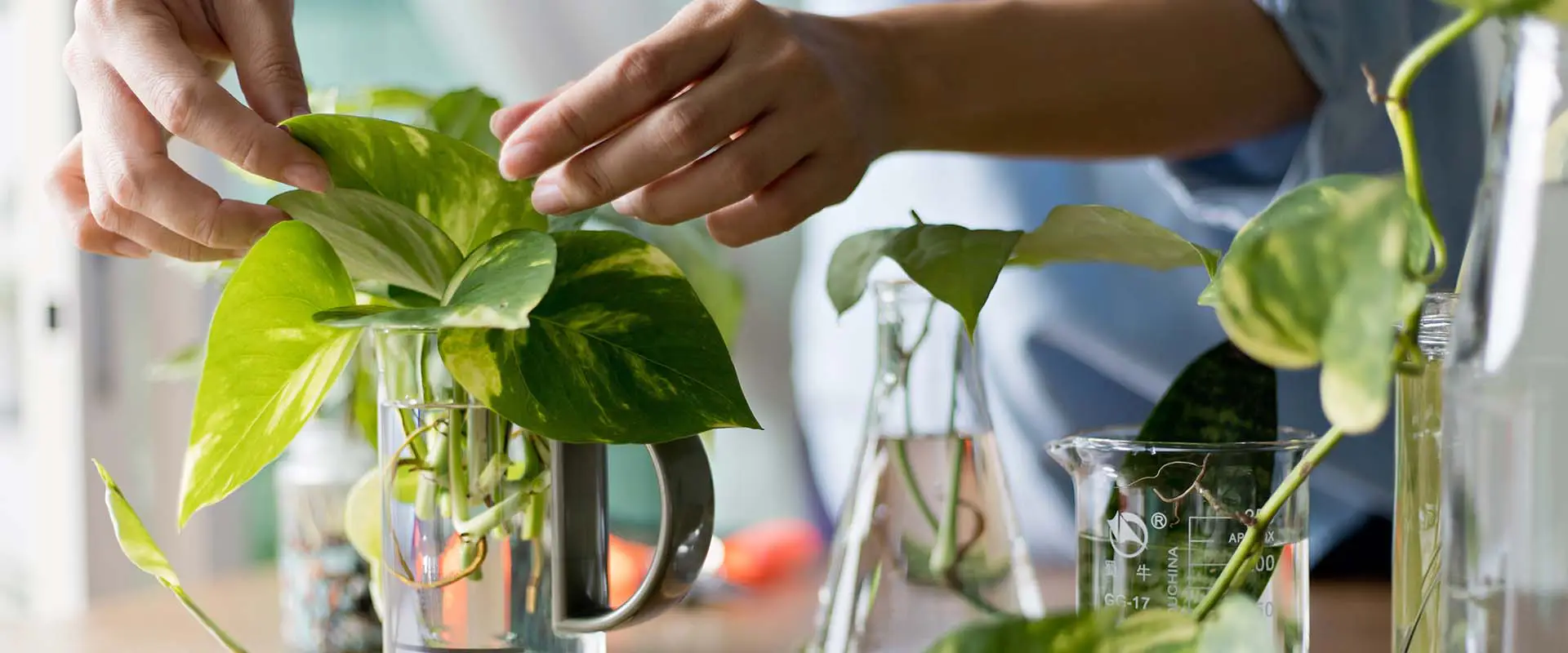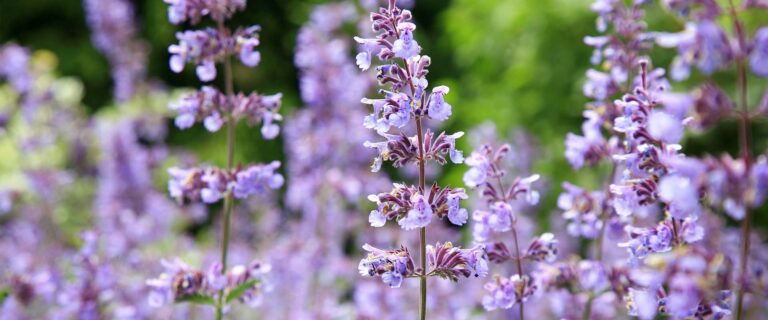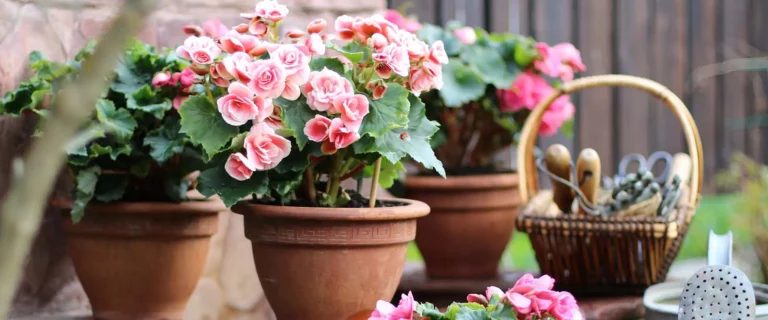First things first… What is propagation? Joy, our houseplant guru here at The Gardener’s Center, says it’s basically like cloning your plant. Say your pothos is getting a little too long and leggy, and you need to give it a haircut. And maybe you feel bad throwing those leggy cuttings away.
Time to grab a propagation station!
Propagation Method 1: Long Cuttings
Take your cutting, between four and six inches, put it in some cool, clean water and watch it start to root. And if you have a friend who admires your ivy, it’s the perfect time to share those cuttings!
Outside of a drinking glass, recycled bottle or an extra vase, there are propagation stations you can buy that have features such as a cork holder on the top. There are smaller and larger sizes designed to hold thinner or thicker cutting stems.
Be patient… Some cuttings could take two weeks to grow enough root structure so they’re ready to be planted in soil. Others may take a month to six weeks. That said, you don’t necessarily have to get them into soil immediately.
Many plants can live in the propagation stations, with their roots continuously growing. But because they’re not in soil, they will need to get their nutrition from somewhere else, which is why you’ll need to fertilize the water.
Propagation Method 2: Small or Node Cuttings
This propagation method is when you take just a leaf cutting that has a single node on the short stem. The little bump or node is where you’ll see the root come out and will eventually turn into a big, full plant.
Joy puts these node cuttings in a shallow tray in a rooting medium. The Gardener’s Center likes Noot Rescue Mix. It has coconut coir (the outer husk fibers of a coconut), perlite and fertilizer. In this case, the fertilizer is Noot Organic Plant Food.
Joy says the Noot Rescue Mix is “fab-u-lous!” for rooting succulents. She says it’s also great to use if you’ve had root rot in any of your plants. The Rescue Mix will salvage their roots because the mix is so well aerated.
Joy recommends Noot’s The Mix potting soil for plants that like more aeration as well. That includes succulents, bromeliads, specialty philodendrons, and even orchids.
She also recommends Noot’s liquid fertilizer for specialty plants such as the marantas, calatheas and “anybody who’s dramatic and fussy.”
It’s all organic and you don’t need much… One teaspoon per half a gallon of water. It goes a long way and while you can use it on anything, it really makes a difference with those specialty plants.









